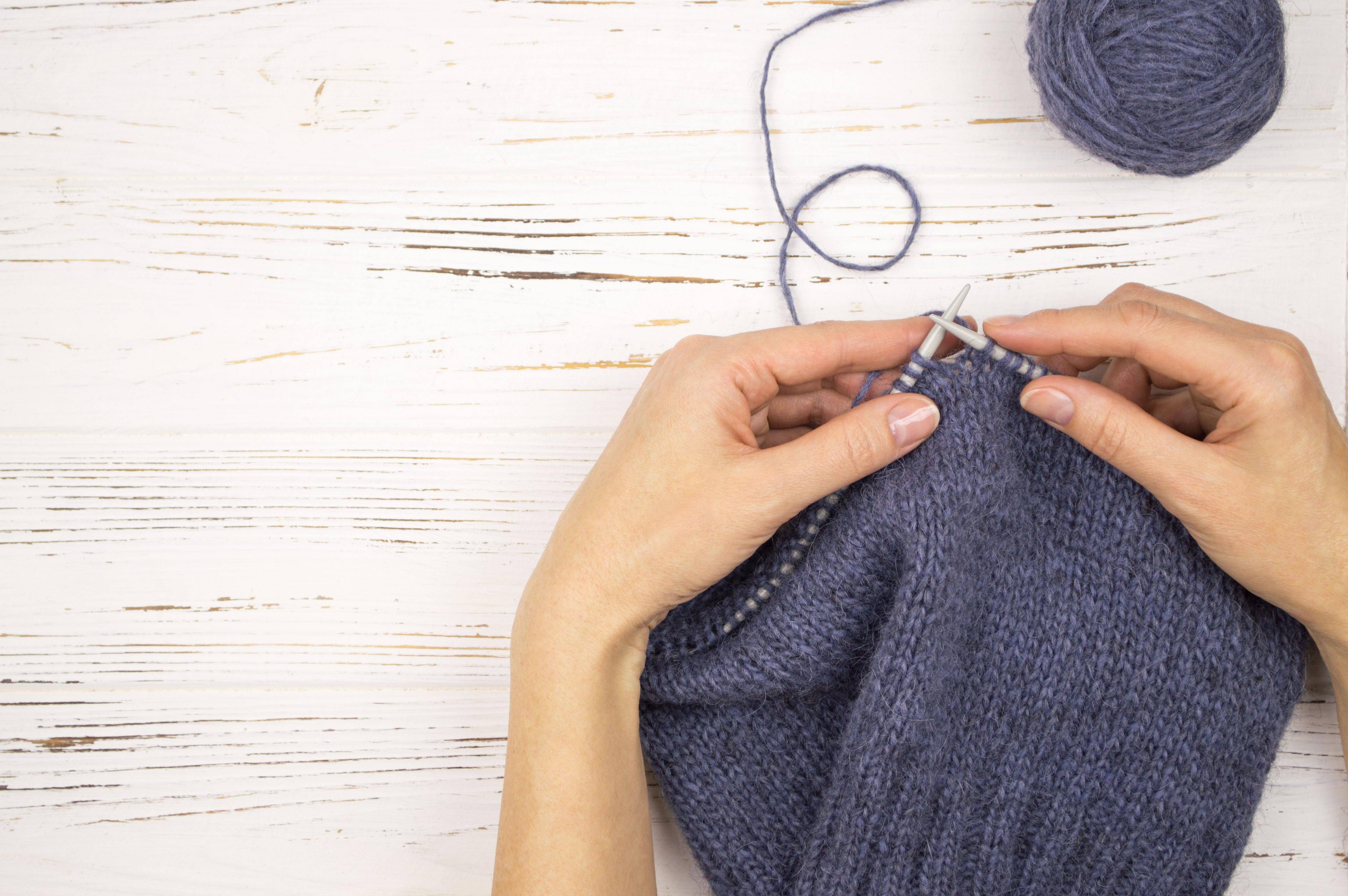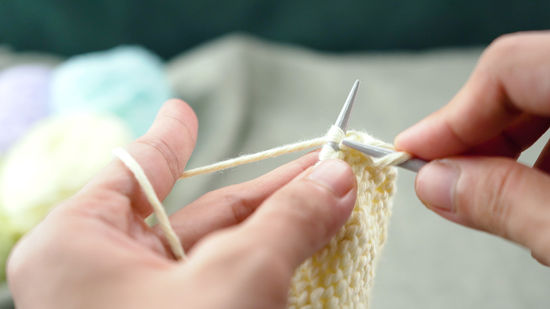
There are many benefits to knitting on a circle needle. You should be aware of these things when choosing your circular knitting needle. It is important to have the correct length cable. Also, a circular needle can be more difficult than a straight one. Fortunately, there are a number of free online resources to help you get started. In this article, we'll discuss the different types of circular needles, as well as some of the benefits of knitting on a circular needle.
Use a circular needle
A friend can give you some helpful tips if you're just starting to knit in the round. Circular needles are great for beginners, but there are a few things to consider before you invest in one. There are some techniques that aren't suitable for knitting with circular needles. One of these is cinching the needle underneath your arm. You can feel the needles and make sure that you have the best one.
The most popular type is the circular knitting needle. However, they are expensive. A good quality needle can be purchased for as low as $10 for beginners. Another reason to buy a circular needle is because it's so versatile. A circular needle can be used to knit everything, from socks to hats. You won't even need to change the needles very often.

Selecting the length of cable
It is important to determine the length of your circular needle's cable. Depending on your project, you may want to use a short cable to avoid having extra cable hanging off the needle. To ensure enough stitches are on your needle, you might choose a longer length cable if you're knitting large projects. Cable lengths can vary from brand to brand when knitting with a circular needle.
The length of your circular needle cable is the total line that measures across the knitting needle. Choosing a length will depend on how many stitches you'll be doing. A shorter length cable is usually 8-16 inches. A longer cable can reach up to 60 inches. A circular needle cable of 16 to 32 inches is the most common length. This is about right for most projects. Also, consider the diameter and length of your knitting tube.
The benefits of knitting with a circular needle
Because circular needles distribute the weight of your project evenly, they are safer for your safety and health. If you are working on a large project, it can be tiring to knit on straight needles. Because circular needles can be stored and transported easily, they are a good choice for knitters who travel frequently. These needles are generally more expensive than straight ones, so make sure you consider all costs before you decide to buy your next set.
One of the biggest benefits of knitting on circular needles is the fact that you can use your hands to create, as opposed to using one-handed. Knitting is a great way to relax. Knitting will help you relax and distract from the stress of daily life. Mindfulness can be integrated into your knitting routine so that you can reap the benefits.

Practicing knitting on a circular needle
You have many advantages when knitting with a circular needle. You can use the Continental or English method, depending on which one you prefer. The Continental method, which requires you hold your yarn with the left hand, makes knitting round very fast and simple. Using a circular needle also makes keeping track of rows and stitches easier. To keep track of your progress, you can place stitch markers between first and last stitches.
A set of suitable needles is crucial before you start any type of project. There are different sizes of needles, and choosing the right ones will determine how comfortable they are to use. Needles with medium widths (e.g. 6--8mm) should be used by beginners. Needles that reach 10 inches in length are recommended for advanced users. A 10-inch needle is small enough to be handled easily. If you are planning to knit larger projects, however, you might want to use a bigger needle.
FAQ
How do I start my new hobby?
First, decide what type or activity you want to pursue.
Once you've chosen your subject, you need to be passionate about it.
It is crucial to know why you want to pursue a hobby. This will help you find direction and a purpose.
Once you've decided what type of hobby you'd like to pursue, you can begin planning.
Think about the equipment that will be needed.
You should consider whether or not you will need to take classes or attend seminars.
You should ensure that you have enough space to enjoy your hobby.
You might also consider joining a club. These groups offer support and advice.
The last thing you should do is think about how much money it would cost to pursue your hobby.
What is the cost of a hobby?
It costs nothing to start a hobby. If you are serious about your hobby it could take years before you achieve your goals.
There is one thing that will help you. It's called passion. If you feel passionate about your chosen field, you'll find it easier to put in the work required to achieve your goals.
And once you start putting in those hours, you may find that you become addicted to the activity. This is where the real fun begins. Because you're doing something you like and it keeps getting better. By the end of the year you'll have probably made a lot of progress.
So don't worry too much about how long it takes. Don't be afraid to try. You might be surprised at the results!
What are some hobbies that seniors might enjoy?
Senior citizens should be able to enjoy activities that they are passionate about. They should also try to stay active by participating in sports and other physical activities.
They may want to join clubs that allow them to meet others with similar interests. This way, they'll feel less lonely as they age.
Seniors need to keep up with current trends. For example they could keep up to date with fashion, art music, literature, politics, and so forth.
What hobbies are best for introverts and what types of hobbies would they enjoy?
The ability to focus on just one thing is a hallmark of introverts. They are more comfortable with solitary activities, such reading, writing, music, and watching movies.
They also love to spend quiet time by themselves. They do not like to socialize all day. They can even become bored when they're surrounded by people.
This is why introverts choose hobbies that make them feel alone. For example, they may enjoy reading books, listening to music, taking photographs, painting, writing poetry, etc.
Some introverts even choose to live alone. This allows them to concentrate on their hobby and not be distracted.
Statistics
- Much of this decline reflects the fact that teens are less likely to work today than in the past; among employed teens, the amount of time spent working is not much different now than it was around 2005. (pewresearch.org)
- The Role of the Mind in Sex, Dating, and Love: Men in the “humor” condition received phone numbers from 42.9% of the female participants and were refused 57.1% of the time. (time.com)
- The intensity of the dialogue partners' bond at the end of the forty-five-minute vulnerability interaction was rated as closer than the closest relationship in the lives of 30 percent of similar students. (time.com)
- I am 100% biologically a woman (discover.hubpages.com)
- This 100% accurate personality-analyzing hobby quiz discovers your passion based on your characteristics. (quizexpo.com)
External Links
How To
How to Start Gardening
Gardening is one of the oldest forms of agriculture. It takes patience, persistence, determination, and perseverance. The first step in starting your own garden is choosing a location where you want to grow food. This could be on a large piece of land or in your backyard. Next, choose what kind of plants you would like to grow. Do you prefer flowers or vegetables? Some people are passionate about growing herbs, while others like raising livestock like rabbits. Before you decide what crops to plant, you should think about how much space is available. If you live in a climate that experiences cold winters, then you might decide to grow fruits or berries as they do well in colder climates.
After choosing what you want to plant you need to prepare your soil. It is vital that your soil is prepared properly to determine whether or not your plants will thrive. The soil should be rich in organic matter to provide nutrients for your plants' roots. Organic matter includes organic matter such as leaves, twigs or grass clippings. You need nutrients to your soil after you have prepared it. You may need different amounts depending on what type of plants you are trying to grow. An online fertilizer calculator can help you calculate these values. Many fertilizers are available, so make sure you know what you are buying.
Now you need to wait for the seeds to germinate. The process typically takes 2 to 3 weeks depending on the weather conditions and temperature in your area. Once your seeds have sprouted, you need to water them regularly. You can endanger your plants if you water them too often or too little. Ensure you give your plants enough water at regular intervals and avoid overwatering. Overwatering can result in root rot, fungal diseases, and even death. Consider that plants generally need less water in the warmer months than they do in winter. Also, remember that certain plants need to dry out after watered. Tomatoes, for example, need to be kept moist but not too wet. They are not happy to be in soggy soil. After the plants have finished flowering they must go dormant. The time when plants stop producing new life and store energy for the next season is called dormancy. Dormancy means that the plant stops communicating with its roots about producing food. Plants continue to store energy throughout this period. If temperatures fall below freezing or the plants are not getting enough sunlight, they will die.
You may be limited in what plants you can grow if you live in an urban area. Concrete sidewalks, roads, buildings and parking lots are all common in urban areas. These blocks block sunlight from reaching ground level. Concrete absorbs sunlight, which prevents the soil beneath from getting enough sun exposure. Many plants can't survive in urban environments due to lack of sunlight. There are many plants that can survive in urban environments. Many trees, shrubs, and perennials can adapt to city living. In addition, many annuals can be grown indoors in containers. You can bring greenery inside your home all year round, regardless of the weather.
Now you're ready to plant.